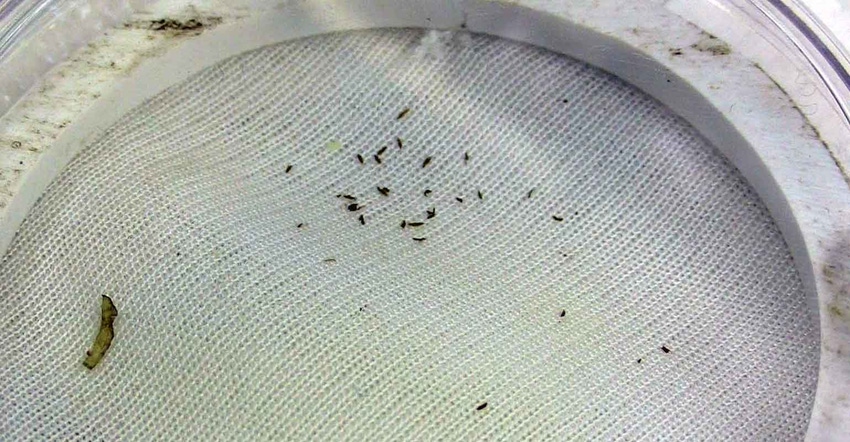April 14, 2022

North Carolina State University researchers designed a textile “Plant Armor” that forces insects to navigate a maze-like path if they try to reach a plant. The design was more effective at blocking insects from reaching cabbage plants in multiple experiments, compared with an alternative crop cover.
Based on their findings, researchers said the Plant Armor could provide a more effective, chemical-free alternative for insect protection.
“We found it’s possible to use this new technology to protect against insects we didn’t think we could protect against,” said the study’s first author Grayson Cave, a doctoral candidate at NC State. “We’ve shown we can use a mechanical barrier that will protect against tobacco thrips and possibly other insects, allowing the plant to grow and thrive underneath.”
Previously, plant covers have been designed to exclude insects based on size alone – like a window screen – researchers said. However, that strategy can be problematic for trying to keep out insects as small as tobacco thrips, which are about the size of a pencil point.
“To exclude insects that are really small using traditional textile cover designs, the size of the openings would have to be so small that it would also prevent water, air and moisture from penetrating,” said the study’s senior researcher Mike Roe, William Neal Reynolds Distinguished Professor of Entomology at NC State. “We had to come up with another way of excluding the insects other than just based on pore size.”
To that end, the researchers designed a three-layer, 3D cover knitted using clear yarn in the outermost and innermost layers. The yarn, which can be made from recycled plastic, still allows sunlight to pass through, but restricts insects from reaching plants. A knitted inner layer is sandwiched perpendicular to the two surrounding layers, creating a maze-like structure within the Plant Armor.
“With our design, the insect has to figure out how to get through the maze to get to the plant on the other side,” Roe said. “The tortuosity makes it more challenging to get through. The insect has a certain amount of time to find food or it will die. That time is relatively fast for a young insect.”
In the first of three experiments, researchers found it took significantly longer for insects to penetrate the Plant Armor. They placed a cabbage leaf and 10 tobacco thrips inside a Petri dish, separated by the Plant Armor or another crop cover. It took approximately three hours for five of the thrips to make it through the Plant Armor, while it took only 12 minutes for them to cross a commercially available, single-layer crop cover. In the same experiment with young, unfed caterpillars, their design was nearly 90% effective at preventing unfed young caterpillars from crossing the Plant Armor in 12 hours.
“In real life, the insect has a lot of other choices of where to go to find food; this was a worst-case scenario where they had only one place to go,” Roe said. “So we expect in the natural environment, the protection is going to be much greater.”
When researchers tested how well they could protect potted cabbage plants inside a cage with unfed caterpillars, uncovered plants were infested and almost completely eaten, while plants covered and sealed with Plant Armor were not. They did not find a single caterpillar on the covered plants after 10 days.
Their last experiment was a three-month, outdoor field trial testing how well the Plant Armor worked when they used it like a greenhouse cover. The researchers found plants covered with Plant Armor were larger on average; the weight of cabbages under the Plant Armor was almost three times larger than the control.
You May Also Like




